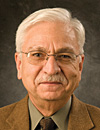SPECIAL TO THE WEB
Annette Simmons-Brown, CFE
On Jan. 16, Martin Thibodeaux of Arnaudville, Louisiana, was arrested and booked on the charge of "financial exploitation of the elderly." Thibodeaux, according to a Jan. 20 KLFY article by Brittany Altom, had been listed as an authorized user of his 86-year-old grandmother's bank account for the purpose of caring for her. However, within six months, he made ATM withdrawals 12 times, cashed checks and made in-person direct cash withdrawals, and visited her bank 22 times to open her safety deposit box. According to the article, Thibodeaux accessed his grandmother's account 34 times and stole more than $36,000.
Financial crimes that target the elderly are increasing. According to The Wall Street Journal, "People 60 years and older made up 26% of all fraud complaints tracked by the Federal Trade Commission in 2012, the highest of any age group. In 2008, the level was just 10%, the lowest of any adult age group." (See, Financial Scammers Increasingly Target Elderly Americans, by E.S. Browning, Dec. 23, 2013.) Investigators estimate that only 10 percent of such frauds are reported, according to the article.
This underreporting of financial crimes against the elderly makes it difficult to get reliable statistics. It's possible that the aggregated financial impact on elderly victims — and society in general — will get much worse before a comprehensive national research and intervention response is entrenched.
Much of current popular and professional discussion on financial fraud that targets the elderly focuses on perpetrators outside victims' social nexus — shady investment promoters, faux home-improvement crooks, telemarketing scammers, identity thieves — who have built actual businesses and use the elderly as a conveniently vulnerable victim pool.
However, within this matrix there's another growing class of criminals: relatives of the elderly who steal from their own vulnerable family members under the guise of assisting them in their midnight years. And it's highly prevalent. According to a Consumer Report PDF, "Steven Peck, an elder-law attorney in Van Nuys, Calif., estimates that 75 percent of elder abuse is done by someone in the immediate family. …"
This two-part article will look at intra-familial elderly financial fraud, which is highly challenging to combat. In part one, we'll look at the growing incidences of this type of fraud. We'll use The Fraud Triangle to look at the similarities of these fraudsters to traditional occupational fraudsters. In part two, we'll look at actual criminal case summaries that demonstrate this category of fraud.
The two parts will outline these fraudsters' patterns of behavior and the difficulties of identifying, investigating and prosecuting crimes within families.
ELDERLY FINANCIAL FRAUD AND THE FRAUD TRIANGLE
Family members often have to assist their aging grandparents, parents, aunts and uncles as they become less able to take care of themselves. Frequently, these helpmates need access to their assets to assist effectively. They need to pay the elderly's bills, execute decisions on the disposition of real and personal property, manage their assets, and help make or implement medical decisions.
Frequently, helpmates are placed onto the elderly's financial accounts — and real property titles — as joint owners specifically so they can manage the elderly's financial matters both small and large. And very often, a helpmate is appointed as an attorney-in-fact through a power-of-attorney instrument that gives him or her specific responsibilities and capacities regarding the elderly's assets. At this point, a helpmate often is given direct and legal access to an elderly person's property and credit, and the ability to steal is remarkably amplified. The Fraud Triangle now comes into play.
Donald Cressey's Fraud Triangle teaches us that there are three interrelated elements that enable someone to commit fraud:
- Perceived pressure to commit and conceal the dishonest act.
- Perceived opportunity to commit the crime without being caught.
- Some way to rationalize the fraud as not being consistent with one's values
(Excerpted and adapted from the 2014 ACFE Fraud Examiners Manual, 4.240, 4.247, copyright 2014.)
Though Cressey developed The Fraud Triangle within the context of occupational fraud — to represent the embezzler, the cash-register skimmer, the insurance scammer, the bid rigger — it also perfectly captures the framework of the crooked family member who now has access to the cookie jar containing the elderly's assets.
Want more? Read Annette's full article about elder fraud on Fraud-Magazine.com.


